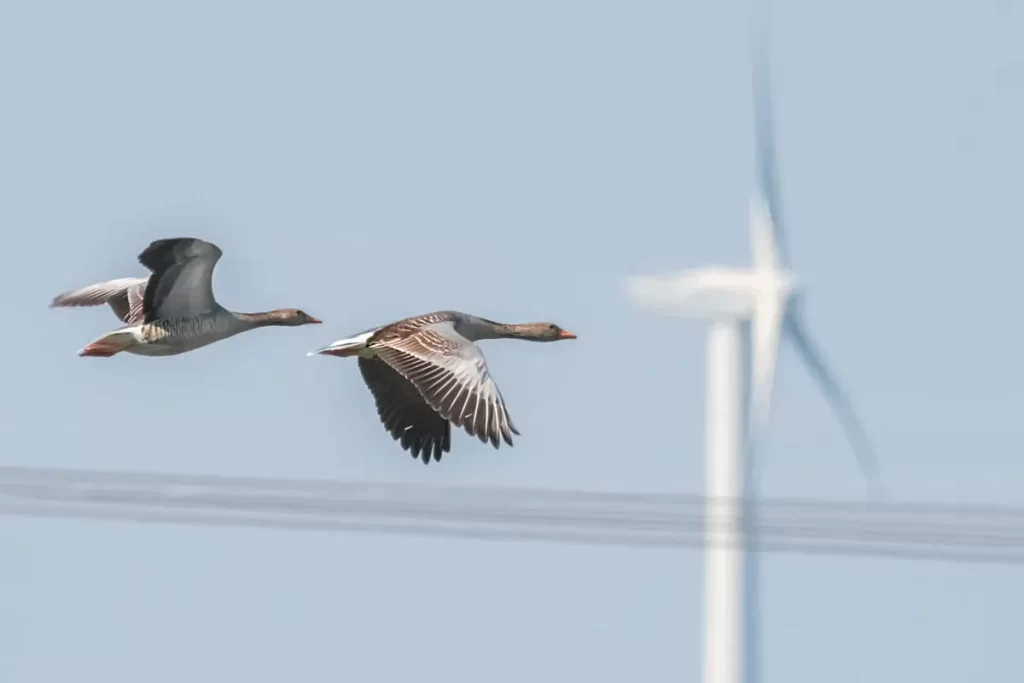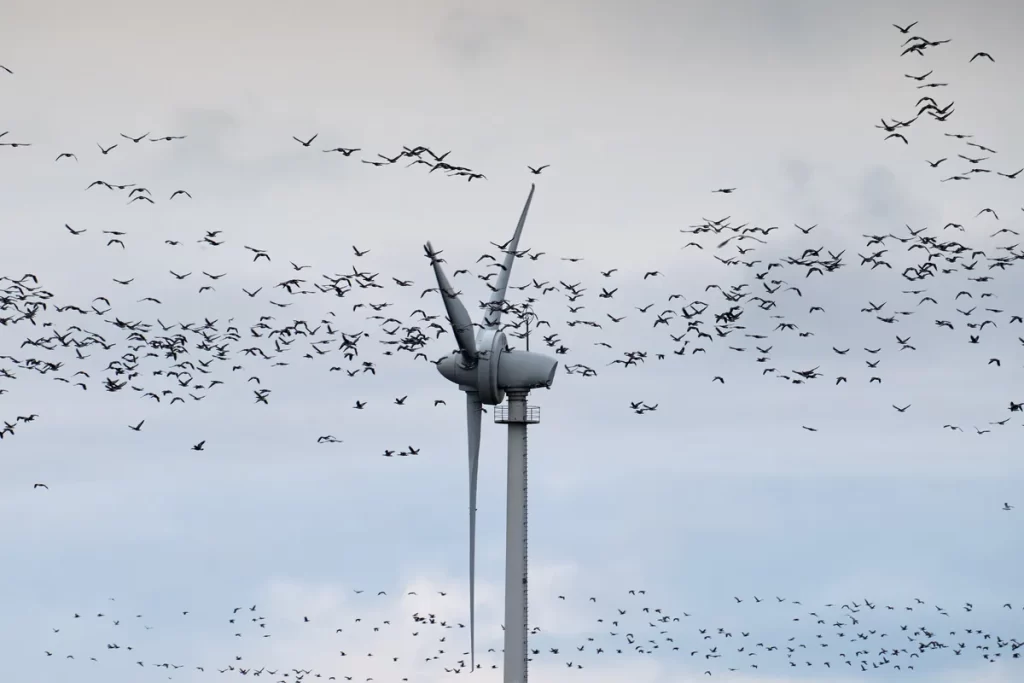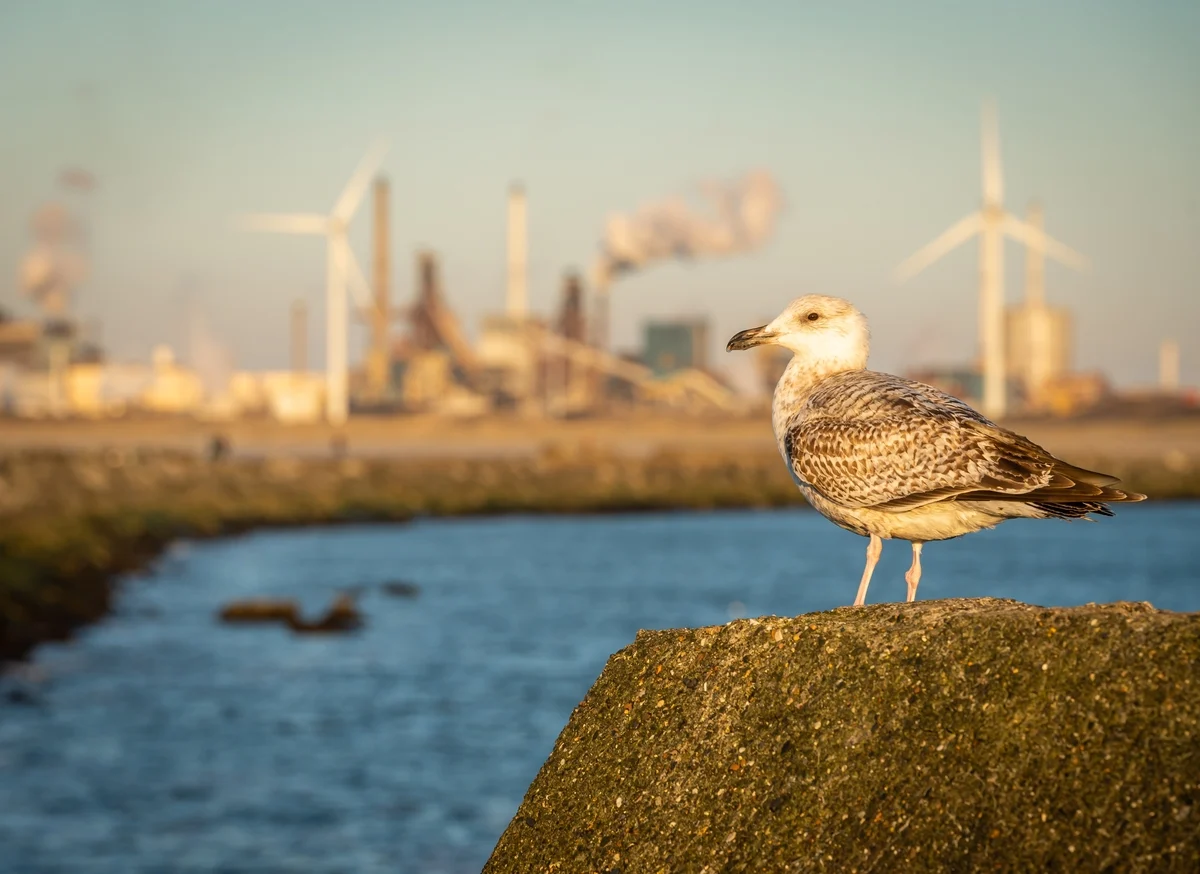Picture this: a green landscape dotted with towering wind turbines, their blades slicing through the air, working in harmony with nature to produce clean, renewable energy. But what about the birds and bats zipping through the skies? Can these majestic structures coexist peacefully with our feathered and winged friends? Let’s embark on a playful journey to explore the truth about birds, bats, and wind energy!
In this blog post, we’ll address common concerns and misconceptions about the impact of wind turbines on birds and bats. We’ll dive into the mysterious world of bird and bat behavior around wind turbines, uncovering the facts and debunking the myths. So, fasten your seatbelts and put on your detective hats, because it’s time to delve into the fascinating world of wind turbines and wildlife!
Birds, Bats, and Blades: Unraveling the Mystery
The curious case of bird collisions with wind turbines
Let’s start with the burning question on everyone’s mind: Do birds really collide with wind turbines? Well, it’s true that some birds do fly into wind turbine blades, but the actual numbers might surprise you. Studies show that wind turbines account for a relatively small fraction of bird deaths compared to other human-made structures like buildings, power lines, and vehicles. It’s important to keep things in perspective – while we should strive to minimize bird collisions, wind turbines are far from the leading threat to our avian amigos!
Batty about wind turbines: Understanding bats’ interactions with wind energy
Now, let’s not forget about our mysterious, nocturnal neighbors – the bats! Bats face a unique set of challenges when it comes to wind turbines. Unlike birds, bats are more likely to succumb to barotrauma, a pressure-related injury caused by rapidly changing air pressure near spinning turbine blades. Researchers are still trying to understand why bats are drawn to wind turbines, but one thing is clear: we need to be mindful of their well-being as we continue to expand wind energy.
A comparison to other human-made threats to birds and bats
Before we let our imaginations run wild with visions of wind turbines wreaking havoc on wildlife, let’s take a step back and compare their impact to other human-made threats. As we’ve mentioned, buildings, power lines, and vehicles are responsible for significantly more bird deaths than wind turbines. Similarly, habitat loss, pesticides, and climate change pose even greater threats to both birds and bats. So, while it’s essential to address the concerns related to wind turbines, we must remember to focus on the bigger picture and tackle the more significant challenges facing our airborne friends.
Safeguarding Our Feathered and Winged Friends
Technological innovations to reduce wildlife collisions
Fear not, dear reader! We humans have a knack for finding creative solutions to complex problems. Several innovative technologies are being developed and tested to help reduce bird and bat collisions with wind turbines. For instance:
- Painting blades: Research has shown that painting one blade of a wind turbine a contrasting color, such as black, can reduce bird collisions by making the blades more visible.
- Ultrasonic deterrents: Scientists are experimenting with devices that emit ultrasonic frequencies to deter bats from approaching wind turbines, reducing the risk of barotrauma and collisions.

Smart site selection: Avoiding sensitive habitats
Choosing the right location for a wind farm is crucial in minimizing its impact on wildlife. By avoiding ecologically sensitive areas, such as major migratory routes, breeding grounds, and feeding sites, we can significantly reduce the risk of bird and bat collisions with wind turbines. Careful site selection, combined with thorough environmental assessments, can help ensure that wind energy projects coexist harmoniously with our beloved birds and bats.
Monitoring and mitigation measures to protect wildlife
Ongoing monitoring and mitigation measures play an essential role in protecting birds and bats from the potential hazards of wind turbines. For example, wind farms can implement temporary shutdowns during periods of high bird or bat activity, such as during migration or mating seasons. By staying vigilant and adapting our practices based on scientific evidence, we can continue to promote wind energy while safeguarding the well-being of our feathered and winged neighbors.
The Bigger Picture: Wind Energy vs. Fossil Fuels
Assessing the environmental trade-offs
As we continue our playful exploration of wind turbines and wildlife, it’s essential to keep the bigger picture in mind. While wind energy can have some impact on birds and bats, it’s crucial to weigh these effects against the benefits of clean, renewable energy. Wind energy helps us reduce our reliance on fossil fuels, which have far-reaching consequences for both wildlife and the planet as a whole.
The benefits of wind energy for wildlife and ecosystems
Wind energy can actually benefit wildlife and ecosystems in many ways. By reducing greenhouse gas emissions, wind power helps combat climate change, which poses a significant threat to countless species worldwide. Moreover, wind energy requires far less land and water than conventional power sources, reducing habitat destruction and leaving more room for our feathered and winged friends to thrive.
Putting wind turbine impacts in perspective
While it’s essential to minimize the impact of wind turbines on birds and bats, we must also maintain perspective on the broader context. Compared to the devastating effects of habitat loss, pollution, and climate change, the impacts of wind turbines are relatively minor. By embracing wind energy as part of a comprehensive approach to environmental conservation, we can work towards a more sustainable future for all living creatures.
Wind Energy and Landscape Aesthetics: A Matter of Perspective
Debating the visual impact of wind turbines on natural landscapes
When it comes to wind turbines and their impact on the beauty of our landscapes, opinions can be as varied as the colors of the rainbow. Some see these towering structures as a blight on pristine vistas, while others view them as elegant symbols of progress toward a sustainable future. The visual impact of wind turbines is subjective and depends on individual tastes and cultural values.

The beauty of clean energy: appreciating wind turbines as symbols of sustainability
For those who see the glass as half full, wind turbines can be considered not just functional but also beautiful. These awe-inspiring structures represent our commitment to a cleaner, greener future, harnessing the power of the wind to generate renewable energy. As we grow more conscious of the urgent need to address climate change and reduce our reliance on fossil fuels, wind turbines can become increasingly appreciated as beacons of hope and progress.
Creative solutions for integrating wind turbines into the environment
While some may never find wind turbines visually appealing, there are plenty of creative solutions for integrating them into the landscape. From painting turbines to match their surroundings to designing blade-less turbines that blend seamlessly with the environment, the possibilities are endless. Additionally, clever placement of wind turbines can minimize their visual impact, such as locating them in areas with existing infrastructure or where natural features can help them blend into the scenery.
What Can You Do? Becoming a Wildlife-Friendly Wind Energy Advocate
Educating yourself and others about wind energy and wildlife
Knowledge is power, and the more we know about wind energy and its effects on wildlife, the better equipped we are to make informed decisions. Stay curious, keep learning, and don’t hesitate to share your knowledge with others. The more people understand the importance of responsible wind energy development, the more support we can build for wildlife-friendly practices.
Supporting responsible wind energy development
Vote with your wallet by supporting companies and organizations that prioritize responsible wind energy development. Look for businesses that invest in wildlife-friendly technologies, site their wind farms responsibly, and actively monitor and mitigate any impacts on birds and bats.
Encouraging the adoption of wildlife-friendly technologies and practices
Advocate for the use of wildlife-friendly technologies and practices in your community and beyond. Whether you’re attending a town hall meeting or writing a letter to your local representative, your voice can make a difference in promoting sustainable, wildlife-conscious wind energy development.
Conclusion
As we wrap up our playful journey through the world of wind turbines and wildlife, let’s remember that the key to a greener, more harmonious planet lies in striking a balance between clean energy development and wildlife conservation. By understanding the facts, debunking the myths, and advocating for responsible practices, we can champion wind energy as a vital piece of the sustainability puzzle, while ensuring the well-being of our beloved birds and bats. So, let’s spread our wings and soar towards a cleaner, greener future together!

